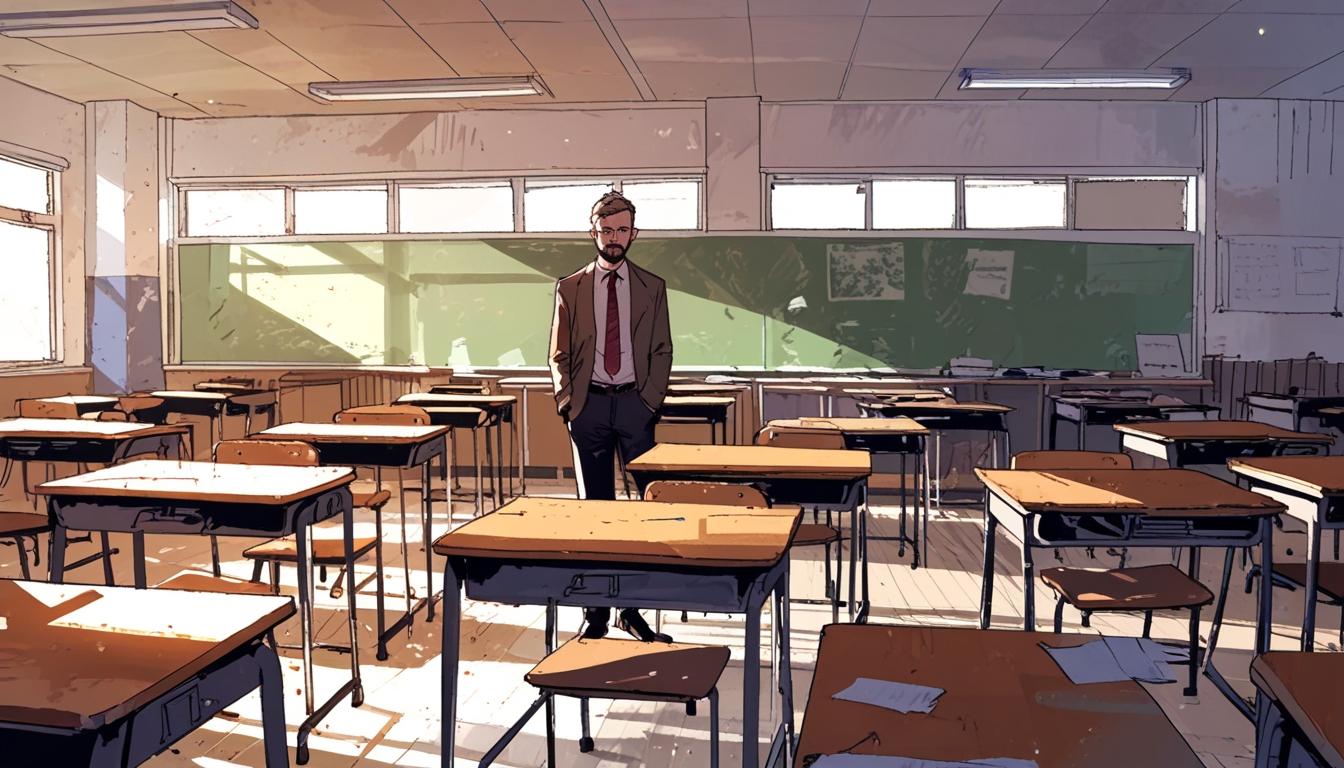The issue of declining teacher numbers in Scotland has reached a concerning threshold, with statistics revealing a consistent drop over the past three years, culminating in levels lower than those recorded when the Scottish National Party (SNP) assumed power in 2007. This downward trend has sparked significant debate amongst local authorities, particularly exemplified by West Dunbartonshire Council's recent stance, which includes a potential challenge to the Scottish Government's demands regarding teacher staffing levels.
Officials at West Dunbartonshire have conveyed to the government that they do not plan to increase teacher numbers, asserting that any repercussions imposed by the government might be contested legally. This declaration follows an extensive request from the Scottish Government for councils to provide information concerning their teacher staffing numbers and any justifications for exemptions. Many councils have cited falling school rolls and insufficient funding as mitigating factors, reiterating their struggles to maintain the current teaching staff, let alone increase it.
The council's response included a detailed seven-point argument, which highlighted significant issues such as reduced allocations of probationary teachers and a decline in the number of pupils. During an online meeting held on 26 March, council officials pressed government representatives for clarity regarding potential sanctions for councils that fail to adhere to staffing increases. In this discussion, it became evident that while government officials were eager to understand how councils intended to restore teacher numbers, many councils, including West Dunbartonshire, could not provide actionable plans citing insufficient government support.
Additional context from the education sector indicates that the situation isn't isolated to West Dunbartonshire. For example, the Glasgow City Parents Group is currently pursuing legal action against plans to cut 450 teaching jobs over the next three years, underscoring widespread anxiety over the implications of diminishing teaching staff on student outcomes. Chair Leanne McGuire has voiced that this increase in class sizes would severely impact students, particularly those in primary schools and those needing additional support.
Moreover, the Educational Institute of Scotland (EIS) has openly criticized the Scottish Government, accusing it of further enabling cuts to teacher numbers. Education Secretary Jenny Gilruth clarified that while councils might not entirely lose substantial funding, there would be reductions based on full-time equivalents (FTEs). This has left councils, including West Dunbartonshire, grappling with the realities of dwindling student numbers and tight budgets. Projections from West Dunbartonshire indicate a further decrease in teacher numbers from 938 to 911 by 2024.
In a further twist, West Dunbartonshire is navigating a precarious fiscal landscape, with proposals on the table that might involve not only cutting additional teaching positions but also reinstating fees for music tuition. This comes as the council faces a significant £7.7 million budget shortfall, raising alarms about the broader educational ramifications. Any financial penalties for failing to comply with government-mandated teacher numbers would likely come out of already strained educational budgets.
Compounding the gravity of the situation, concerns have escalated around the legality of the Scottish Government's measures. An earlier declaration by the local authority umbrella group, Cosla, suggested that the government's stringent requirements might be 'ultra vires', potentially overstepping legal boundaries. This situation highlights a broader discontent regarding the government's management of educational funding, which has prevented councils from making strategic decisions based on their unique challenges.
Alluding to the joint agreement established between the Scottish Government and Cosla, officials pointed out that the rushed nature of this negotiation has left councils feeling unprepared and unable to comply effectively. Many council leaders were reportedly not sufficiently briefed before budgets were set, raising questions about the efficacy of such policies in addressing the real issues facing Scotland's education system.
As pressure mounts from various fronts—parents advocating for their children's education, councils defending their budgets, and educational bodies calling for fair treatment—it remains to be seen how the Scottish Government will respond. Further communications from Education Secretary Jenny Gilruth are expected soon, which may offer clearer guidance on the future of teacher numbers in Scotland. Nevertheless, the current landscape hints at a challenging path ahead for education policy and resource allocation.
Reference Map
- Paragraph 1 - [1]
- Paragraph 2 - [1]
- Paragraph 3 - [1]
- Paragraph 4 - [1]
- Paragraph 5 - [2]
- Paragraph 6 - [3]
- Paragraph 7 - [4]
- Paragraph 8 - [5]
- Paragraph 9 - [6]
- Paragraph 10 - [7]
Source: Noah Wire Services
